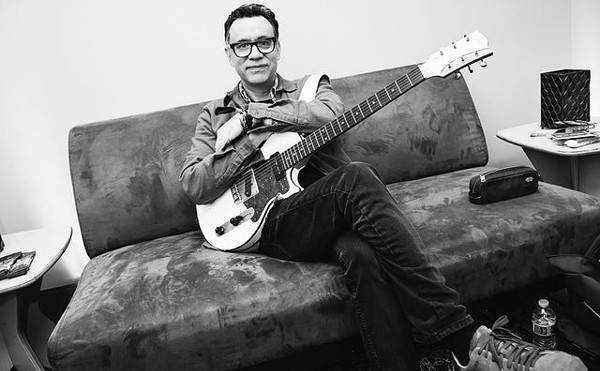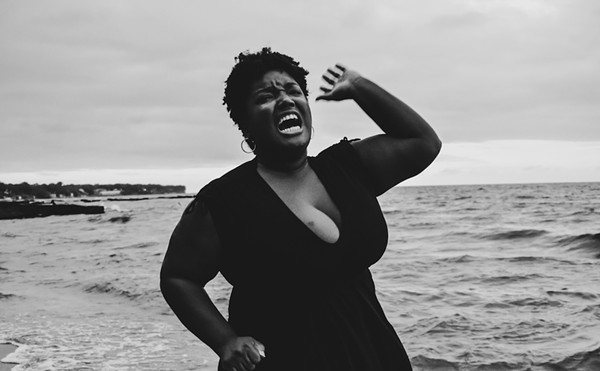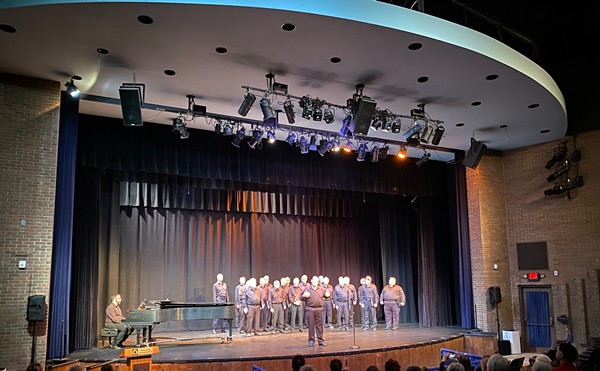Back in 1911, a pair of Cleveland artists founded a forum to promote the European "new art" of Modernism. After some early tribulations, that group — the Kokoon Arts Club — came to be regarded as the most vibrant cultural force in Cleveland throughout the 1920s.
Though the Depression and war effort sapped arts patronage, condemning the club to wither for two decades before an unceremonious dissolution in 1956, the Kokoon Club's golden age still stands as an inspiration for Cleveland creators. To mark the centennial of the club's founding, William Scheele, owner of Kokoon Arts Gallery in 78th Street Studios, is paying tribute with an exhibition honoring historic club members and their contemporary spiritual descendants.
"I want to get away from the public view of artists as no-goods sitting around coffee shops," Scheele says today. So did Kokoon members: They were commercial artists, rather than teachers who enjoyed the relative security of academia; to survive and continue making art, their work needed to resonate with the public and with clients. Scheele, too, believes art should be relevant to everyday people. To make it so, he suggests exploration of new, practical crafts like those promised by the digital revolution.
In 1913, cash-strapped Kokooners thought to sell tickets to their friends for a costume-party fund-raiser, dubbed the "Bal Masque." Attendees paraded in costumes channeling carnivals, theatrical farces, and Cubism. Scandalized by the scantiness of some women's costumes and weird happenings, the press denounced the ball as an "orgy," bemoaning that Cleveland's bohemianism was "second only to New York's."
For years, the club fought with city officials to secure dance halls for the event. But as the city eased into the Jazz Age, the ball and Kokoon enjoyed growing respectability. The club-affiliated "Cleveland School" gained recognition as a collective of boldly original watercolorists and ceramicists. Another member, architect J. Milton Dyer, was tapped to design City Hall. By 1925, the Bal Masque had established itself as a touchstone cultural event, attracting 1,800 attendees.
This annual night of adult fun, perhaps unfairly, defines public memory of an otherwise serious community of artists. But this libertine legacy also furnishes its own redemption: It inspired and secured the preservation of some uniquely personal artwork. In the early 1920s, club officers established a friendly contest among members to design invitations for the ball. Believing their entries would be seen only by like-minded artists, entrants were bolder in their experimentation and more risqué in their subject matter than they could be in their commercial works.
Lithographer Joseph Jicha seems to have been the judges' favorite; Scheele's show features three of his winning submissions from three different years. The 1926 entry (pictured) depicts the descent to Earth of a fleshy man and a female figure, smiling confidently and painted vividly green, like a nature spirit or absinthe-summoned Green Fairy. In another, a curly haired, angular-featured woman dances with a gangly African marionette. Even if Jicha's uses of mystic and multicultural tropes are superficial, that he found their subject matter worthy of attention at all speaks to a desire to find common humanity running through foreign peoples and distant times.
To represent the rest of Kokoon, Scheele has wisely focused on watercolors. August Biehle enthralls with an Art Nouveau sylvan scene of vivid oranges, blues, and greens featuring classical figures and parakeets. William Sommers honors the pastoral in small, simply colored, but charming landscapes of herds and riverside hamlets.
In addition to such historic pieces, Scheele has assembled an array of work by contemporary local artists, each with unique family resemblances to the Kokoon project. A few of the pieces (such as Richard Sedlon's own invitation for a fictional 1987 Bal Masque) explicitly reference the club. Many embody a modernistic fascination with mythology. A Ralph Woehrman print, for example, depicts an Amazon woman with a rhinoceros beetle for a head, like a blessedly forgotten Egyptian deity.
The pronouncement "Art is long" recurs again and again in vintage Kokoon publications. Scheele, too, has ensured that the work of his predecessors will live on, and maybe will be part of our future too.











